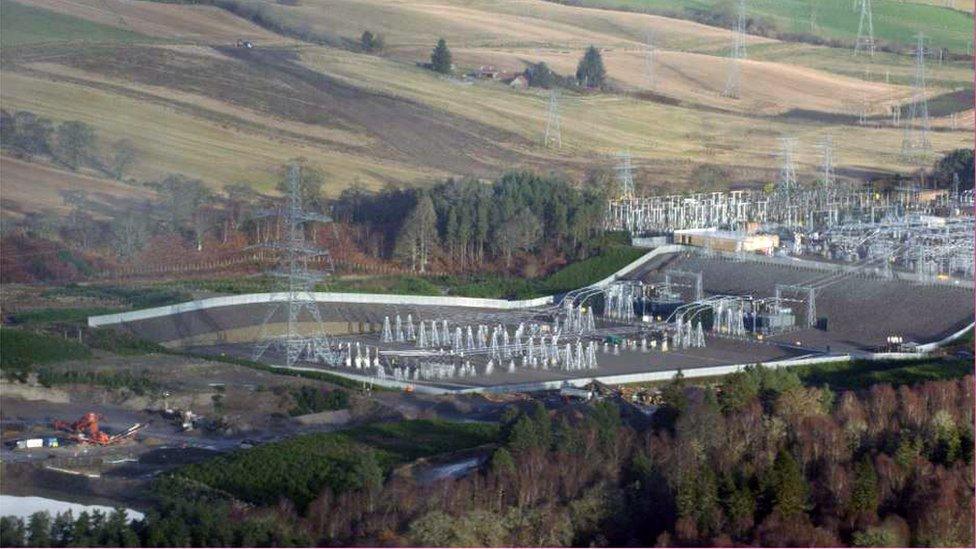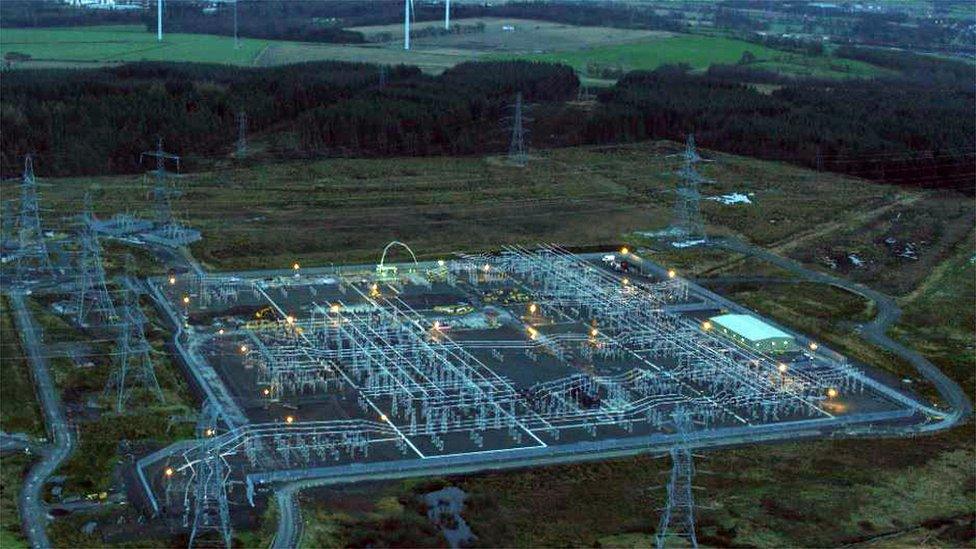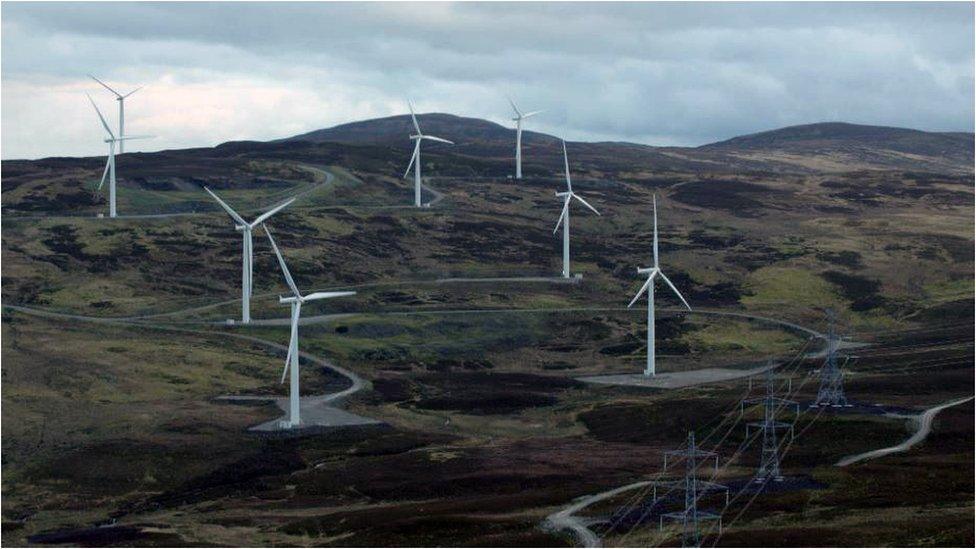Controversial Beauly to Denny power line fully operational
- Published
A look at the new fully-operational Beauly-Denny power line from the air - in 85 seconds
The controversial Beauly to Denny power line has been "energised" and is now fully operational along its entire length.
It carries electricity from windfarms and other renewable energy schemes in the north to consumers in the south.
The energy companies behind the project have described the line as a "power super highway" between the Highlands and the central belt.
But opponents question the cost of the scheme and its impact on the landscape.
The new power line is said to be the highest transmission line in the UK, passing the Corrieyairack Pass at more than 2,500ft above sea level, as well as one of the longest.
The line has been switched on in stages, with the first section going live in July 2013.

The Beauly substation near Inverness is the start of the transmission line

The Denny substation near Falkirk is the destination for the power line
Pearse Murray of Scottish Power Energy Networks said: "The line will increase our ability to transfer power from the north to the south by about 1,200MW.
"To put some sense of scale on that, it's the equivalent to the power usage of 600,000 homes.
"A city the size of Glasgow uses about 800MW at peak, so the line will provide enough energy to power a city one and a half times the size of Glasgow."


What is the Beauly-Denny powerline?
The line is 137 miles long and supported by 615 pylons which run through some of the country's most inaccessible terrain.
The project supported more than 2,000 jobs over seven years
But it attracted about 20,000 objections
It is the longest transmission line to be built in the UK in recent times
Its highest point is the Corrieyairack Pass at 2,526 feet
Workers received mountain survival training to help them cope with harsh winter conditions.
It took more than five years to build.

Helen McDade of the John Muir Trust told BBC Scotland News that the new line had a "major impact" on the landscape, particularly the tracks that were built to put the major pylons in.
She added: "One of the planning conditions was that these tracks would be removed and that's not happening in a lot of places, so its had a big impact environmentally."
Campaigners in central Scotland have said they share the concerns of those further north.
Dr Nicki Baker of Friends of the Ochils said: "When you put really large man-made structures into a landscape like this, it takes away a degree of the naturalness, the beauty, the quietness, the feeling of timelessness, peace and tranquility that you get there."

'Low carbon'
The industry regulator, Ofgem, says the cost of construction currently stands at just over £820m.
A spokesman said: "Britain's electricity networks need to be upgraded to connect increasing amounts of low carbon generation.
"We will ensure that customers pay no more than they should for the upgrade by checking the companies have delivered the project as efficiently as possible."
The cost of building the line is met by electricity consumers across Great Britain.
Ofgem says 7% of electricity bills goes towards investing in and maintaining the high voltage grid.